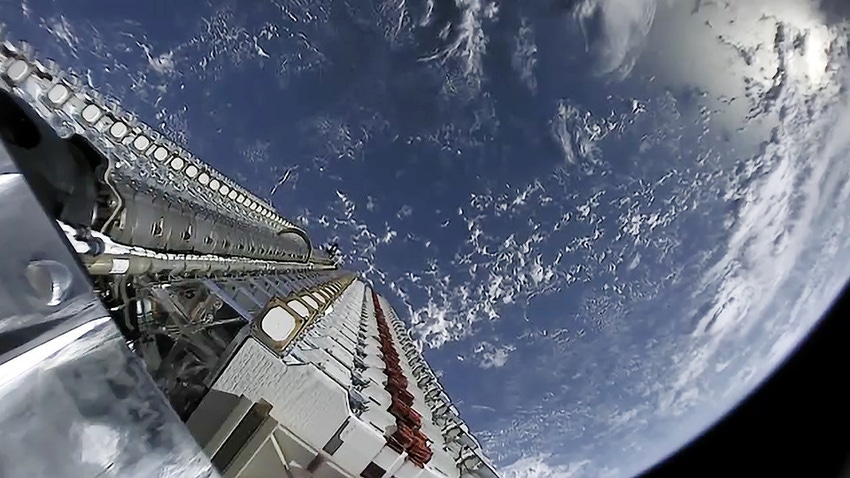Canadian telco Rogers has become the latest big name to jump on the satellite direct-to-device (D2D) bandwagon.
April 28, 2023

Canadian telco Rogers has become the latest big name to jump on the satellite direct-to-device (D2D) bandwagon.
The operator on Wednesday announced it has partnered with SpaceX to avail itself of the Elon Musk-owned company’s upcoming Direct to Cell service, which promises to enable satellite communication using off-the-shelf smartphones.
Similarly to One New Zealand, which partnered with SpaceX earlier this month, Rogers is pitching its D2D service as a public safety service.
“As the country’s biggest investor in 5G spectrum with Canada’s largest 5G network, Rogers is proud to work with SpaceX to expand wireless coverage across all of Canada, from coast to coast, to keep Canadians connected and safe,” said Rogers CEO Tony Staffieri, in a statement. “In the future, these investments will deliver wireless connectivity, including access to 911, to even the most remote areas.”
As most people know, Canada is one of the most sparsely-populated countries on Earth. According to UN stats, Canada’s population density stood at 4 people per square kilometre in 2021. By comparison, one square kilometre of its shy and retiring next door neighbour the US is shared by 35 people.
More than 80% of the 37 million people living in Canada are urban dwellers, and so terrestrial mobile coverage – in terms of population – is high. According to the Canadian Radio-Television and Telecommunications Commission (CRTC), mobile networks cover 99.7% of the population. A mere 122,800 people have no cellular coverage at all. In addition, 87.2 percent of major roads and highways are covered.
However, outside these major population centres and transport routes, there is a lot of uncovered territory. According to various sources, including local price comparison site Compare Cellular and consumer advocacy group Cansumer, roughly two-thirds of Canada’s landmass has no coverage whatsoever.
What’s more, when it comes to broadband speed, there is still a distinct digital divide between urban areas and rural, remote, and First Nations reserves. The Canadian government has set a target of delivering a minimum of 50 Mbps downlink/10 Mbps uplink to every household in the country. According to the Office of the Auditor General of Canada (OAG), 99.3% of households in urban areas could get these speeds at the end of 2021, but that figure falls to 59.5% for rural and remote areas, and 42.9% for First Nations reserves.
Satellite fills the void, with various players like Galaxy Broadband, Xplornet and Starlink – which entered Canada’s satellite broadband market in early 2021 – among others, serving customers in remote areas. That’s fine for home broadband services, but that doesn’t help people in the middle of nowhere with just their smartphone.
This is where D2D technology comes in.
“As a Canadian, I’m excited that SpaceX is collaborating with Rogers to bring SpaceX’s Direct to Cell service to Canadians,” said Sara Spangelo, co-lead for Direct to Cell at SpaceX. “I’m proud of the impact this will have across the country wherever Canadians may work, play or travel.”
Of course, the service itself won’t be launching any time soon.
As Telecoms.com highlighted when the One New Zealand deal was announced, D2D connectivity will be provided by SpaceX’s second-generation low Earth orbit (LEO) satellites, and these are not due to be commercially available until late 2024. The first satellites only entered orbit at the end of last December. What’s more, at launch, Direct to Cell will only offer SMS and MMS services; voice and data support will be added at a later date.
By the time its D2D offering does go live, SpaceX could have some competition to deal with too.
Earlier this week, AST SpaceMobile successfully conducted a voice call between the US and Japan using unmodified smartphones connected via its LEO constellation – a world first, so it claims. While there was no word on its timeline for launching commercial services, it marks a noteworthy technological milestone.
Get the latest news straight to your inbox. Register for the Telecoms.com newsletter here.
About the Author(s)
You May Also Like







.png?width=300&auto=webp&quality=80&disable=upscale)

.png?width=300&auto=webp&quality=80&disable=upscale)
_1.jpg?width=300&auto=webp&quality=80&disable=upscale)



.png?width=800&auto=webp&quality=80&disable=upscale)